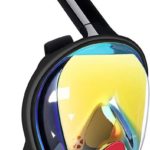What are wetsuits & How to use wetsuits
- Introduction to Wetsuits
- Materials Used in Wetsuits
- Types of Wetsuits
- Factors to Consider When Choosing a Wetsuit
- Features of a Wetsuit
- Pros and Cons of Wetsuits
- How to Use a Wetsuit
- Maintaining and Cleaning a Wetsuit
- Conclusion: Finding the Right Wetsuit for You
- Introduction to Wetsuits: Wetsuits are garments designed to provide thermal insulation, buoyancy, and protection to individuals engaged in water sports or activities. They are typically made of neoprene, a synthetic rubber material that is lightweight, flexible, and provides excellent insulation properties.
- Materials Used in Wetsuits: Wetsuits are primarily made of neoprene, which is a synthetic rubber material. Neoprene is waterproof, flexible, and lightweight, making it ideal for use in wetsuits. The thickness of the neoprene can vary, with thinner neoprene being used for warmer water temperatures and thicker neoprene for colder water temperatures. Other materials that may be used in wetsuits include nylon, spandex, and polyester.
- Types of Wetsuits: There are several types of wetsuits available, including full suits, spring suits, and short suits. Full suits cover the entire body, including the arms and legs, and are suitable for colder water temperatures. Spring suits cover the torso and arms, while short suits cover the torso and upper thighs.
- Factors to Consider When Choosing a Wetsuit: When choosing a wetsuit, there are several factors to consider, including the water temperature, the duration of your activity, your body shape and size, and your personal preferences. It is important to choose a wetsuit that fits snugly to reduce water flushing and improve thermal insulation.
- Features of a Wetsuit: Wetsuits come equipped with various features designed to provide comfort and durability, including zippers, reinforced knees and shoulders, and key pockets. Some wetsuits also have added features such as built-in hoods or gloves.
- Pros and Cons of Wetsuits: Wetsuits provide thermal insulation, buoyancy, and protection from the environment, making them ideal for water sports and activities. However, they can be challenging to put on and take off, and may not fit everyone perfectly. They also require proper care and maintenance to prolong their lifespan.
- How to Use a Wetsuit: To use a wetsuit, ensure it fits snugly and put it on by sliding it over the legs and pulling it up to the waist. Then, pull it over the arms and shoulders, adjust as necessary, and close any zippers or fastenings. Enter the water and enjoy your activity, then rinse the wetsuit thoroughly with fresh water and hang it to dry.
- Maintaining and Cleaning a Wetsuit: To maintain and clean a wetsuit, rinse it thoroughly with fresh water after use and hang it to dry in a well-ventilated area. Store the wetsuit in a cool, dry place, away from direct sunlight or heat sources. Avoid using harsh detergents or bleach on the wetsuit, and never machine wash or dry the wetsuit.
Features:
- Made of high-quality neoprene material, providing thermal insulation and flexibility.
- Available in different thicknesses, ranging from 2mm to 7mm, to suit different water temperatures and conditions.
- Equipped with various features, such as zippers, reinforced knees and shoulders, and a key pocket, providing comfort and durability.
- Designed to fit snugly to the body to reduce water flushing, providing better insulation and comfort.
- Available in a range of sizes to fit different body types.
Pros:
- Provides thermal insulation and buoyancy, allowing for comfortable use in cold water.
- Protects the wearer from the environment, including sunburn, abrasions, and stings from marine life.
- Designed for a snug fit, reducing water flushing and improving thermal insulation.
- Available in a range of sizes and thicknesses, providing versatility and flexibility for different water temperatures and conditions.
- Equipped with various features, such as zippers and reinforced knees and shoulders, providing comfort and durability.
- Lightweight and flexible, allowing for ease of movement.
Cons:
- May not fit everyone perfectly, and some individuals may experience discomfort or chafing in certain areas due to the wetsuit’s fit.
- Thermal insulation provided may not be sufficient for very cold water temperatures or extended periods in the water.
- Can be challenging to put on and take off, particularly for individuals who are not used to wearing wetsuits.
- Can be expensive, particularly for higher-end options.
- Requires proper care and maintenance to prolong its lifespan.
How to Use Wetsuits:
- Ensure the wetsuit fits snugly, with no gaps or looseness around the arms, legs, or torso.
- Put the wetsuit on by sliding it over the legs, pulling it up to the waist, and then pulling it over the arms and shoulders.
- Close any zippers or other fastenings on the wetsuit.
- Adjust the wetsuit as necessary to ensure a snug fit.
- Enter the water and enjoy your water sports or activity.
- After use, rinse the wetsuit thoroughly with fresh water to remove any salt or debris.
- Hang the wetsuit to dry in a well-ventilated area, away from direct sunlight or heat sources.
- Store the wetsuit in a cool, dry place, preferably on a hanger or other appropriate storage device, to maintain its shape and prolong its lifespan.
Conclusion:
Finding the Right Wetsuit for You Choosing the right wetsuit depends on your individual needs and preferences. Consider factors such as water temperature, duration of your activity, body shape and size, and personal preferences when choosing a wetsuit. With proper care and maintenance, a wetsuit can provide years of comfortable and enjoyable use in the water.





